30 Shelf-Stable Foods for Your Survival Pantry

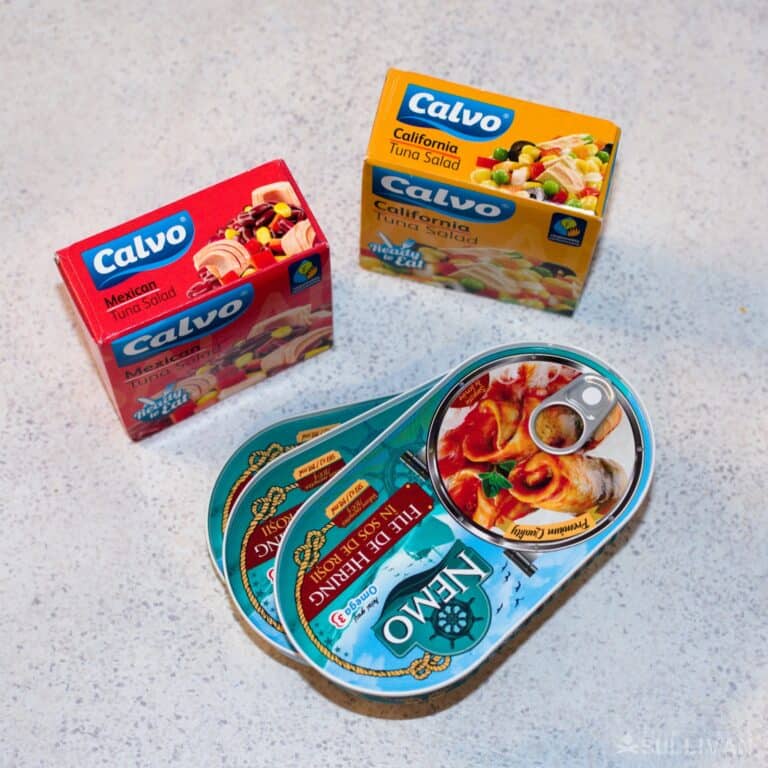
One of the most fundamental preps you need to have on hand is food. It’s fine to have all the gear, technology, and weaponry you can think of, but at the end of the day, you can’t eat it!
When it comes to food security, nothing beats having a storeroom, or survival pantry, with food that is fresh and ready to eat. But food, of course, can go bad. This necessitates rotation so you can maintain your stash, and the more food you have on hand, the bigger the chore rotation is.
It’s not something you want to do all the time if you can avoid it, and you can make your life easier and ensure the longevity of your stash by choosing foods that are shelf-stable with a long storage life.
In this article, I’ll be telling you about 30 shelf-stable foods that deserve a spot in your stash…
You might not know this, but that sell-by date that’s printed on canned food you get at the grocery store is not the expiration date. That’s just a quality or freshness date!
Depending on the type of food, your factory-canned goods will last anywhere from 1 to 2 years if kept at about 70° Fahrenheit, and that includes vegetables, fruits, and meat.
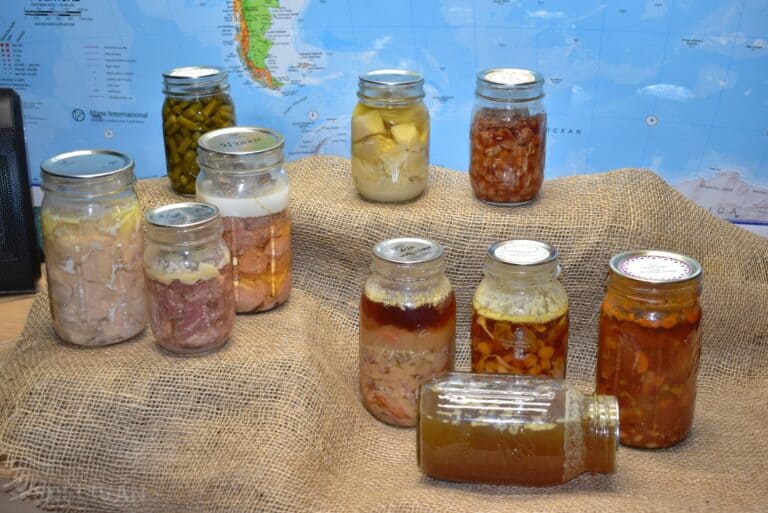
Learning how to can food at home is a time-honored tradition in many families, and also a great prepper skill. This is one of the best things you can do to improve your food readiness and do so cheaply.
However, home-canned food as a rule doesn’t last as long as the factory-canned stuff, but you’ll still get a year out of most things reliably. As always, protecting your stash from sunlight and fluctuating temperatures will help it last as long as possible.
Spam is basically just canned ham despite all the mean things that people say about it, and though it technically belongs up above in the factory-canned goods entry, it is unique enough and loved enough to warrant its own inclusion on our list.
It’s one of the best, tastiest, and most versatile animal protein choices out there, and one you would be wise to stock up on.
This is another mainstay item for preppers and an incredible value considering its nutritional and caloric content. There are countless ways to prepare pasta. Note that even if your pasta gets a little hard and stale, it is still safe most likely; you’ll just need to boil it longer.
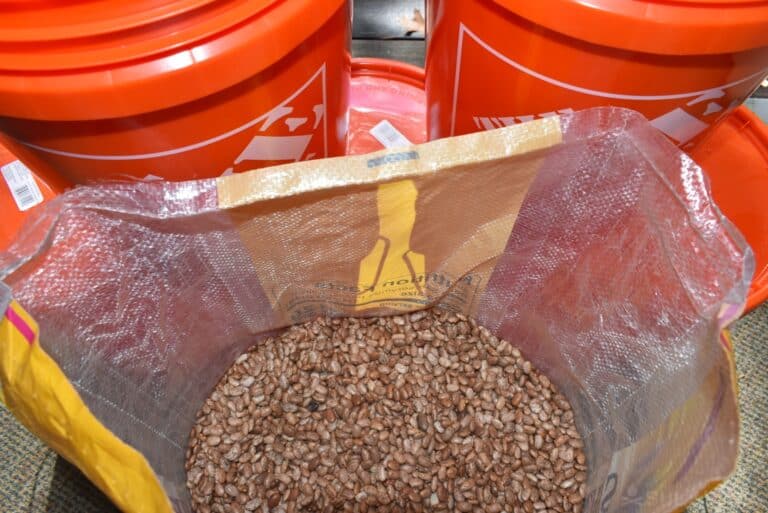
More than any other food on our list, mass quantities of dried beans are associated with prepping and that’s with good reason…
They have an excellent nutritional profile all around, including lots of protein, and if stored properly, will last basically forever. Preparation requires a lot of water, though, so make sure you account for that.
Dehydrating fruit and veggies is a great way to make them last longer generally and one of the only ways to get a lengthy shelf life at room temperature.
However, high moisture levels will still quickly spoil it, so vacuum packing, Mylar bags, or other quality airtight containers are a must.
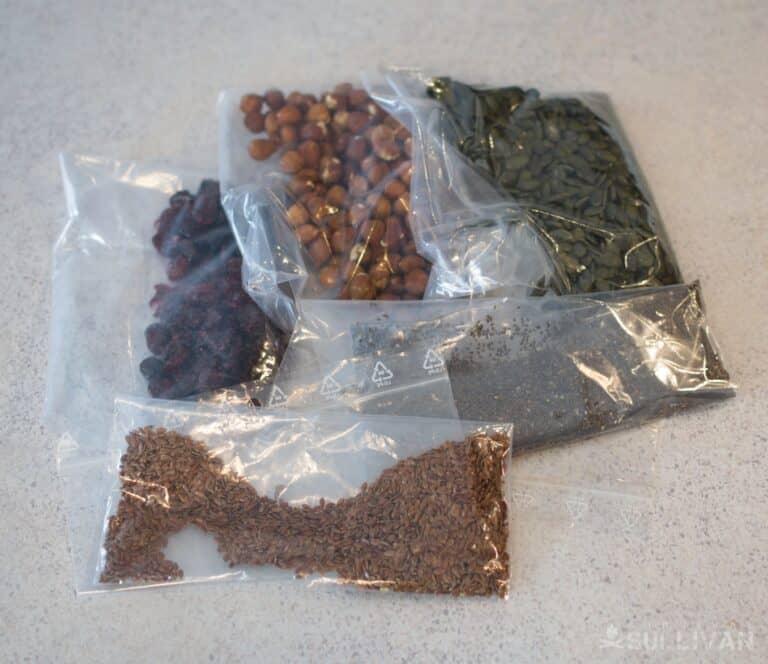
Both seeds and nuts are nutritional powerhouses, and whether you like cashews, peanuts, pecans, walnuts, pumpkin seeds, sunflower seeds, or something else entirely, you’ll be glad you got these in the middle of a crisis.
Once again, keeping them cool and safe from moisture is paramount if you want to keep them from going rancid!
Olive oil is one of the best, most flavorful, and most versatile cooking oils that you’ll ever use in the kitchen, and it also contains lots of healthy compounds such as polyphenols.
Luckily for us, it is also one of the longest-lasting oils! If you use this stuff as much as I do in the kitchen, rotating your supply will be a snap.
Peanut oil is another wonderful cooking oil choice for our survival pantry. It is long-lasting, has a high smoke point, and imparts a tasty flavor to anything you want to prepare with it.
Like all foods and cooking oil in particular, keep it out of direct sunlight, keep that container sealed, and keep the storage area cool.
This hydrogenated oil is supposedly one of the worst things you can eat but my grandma used the stuff all the time in her recipes and we are still alive, so make your own determination.
Crisco is the longest-lasting choice of cooking oil there is, giving you at least 5 years if you keep the factory container sealed.
This is another kitchen staple that you’ll reach for constantly, and as long as you’ve got the ability to bake or fry, it is a great source of bulk calories in the form of bread.
As versatile as it is, white flour won’t last as long as other things on our list in room temperature storage; expect to get anywhere from 6 months to a year out of it at the absolute most if you keep it completely safe from moisture and pests, and preferably keep it cool.
Spices make the meal when it comes to flavor profile, and you might only be worried about calories and nutrition when putting your survival food stash together, but that is a mistake.
Planning to fight menu fatigue is important for long-term scenarios, and a good assortment of spices will help you do that. Be sure that you protect all spices from moisture because they will mold quickly!
I’ll level with you; it’s tough to make do with dried butter if you’re used to the real thing, but it can get the job done and doesn’t taste too bad once you get used to working with it. Most importantly for us, it will keep for a long time in pantry storage!
If you just can’t get behind using dried butter bits, look into clarified butter. Clarified butter is butter that has been melted and then has the milk solids and liquid removed.
What remains will last for about half a year on your shelf at room temperature, but it must be scrupulously protected from moisture: any condensation will cause rapid spoilage.
I recommend you leave the factory package sealed if you want to depend on this stuff for the long haul.
If all you’ve ever tried are the instant eggs from decades past, you don’t know what you’re missing out on.
Modern powdered and instant egg products are shockingly good, very easy to prepare, and incredibly nutritious. These are picture-perfect as a supplemental prepper food and also as an ingredient in recipes that call for eggs, like desserts.
Even better, they last quite a long time at room temp, but if you open the container, the shelf life will then be measured in just weeks or months.
Even though many cheeses will store for a long time and remain safe at cool temperatures of 50 to 55 degrees Fahrenheit, guaranteeing those temperatures in a survival situation can be quite difficult in most locales.
A more reliable option for adding flavor to food or making some good old-fashioned mac and cheese is dried cheese powder.
And yes, it’s basically the exact same stuff that comes in commercial mac and cheese boxes! If you like that stuff, this will be right up your alley.
Instant potatoes are a prepper staple. Very easy to prepare, filling, and packed with calories and minerals, these can be put to use in a variety of dishes or as a tasty side item.
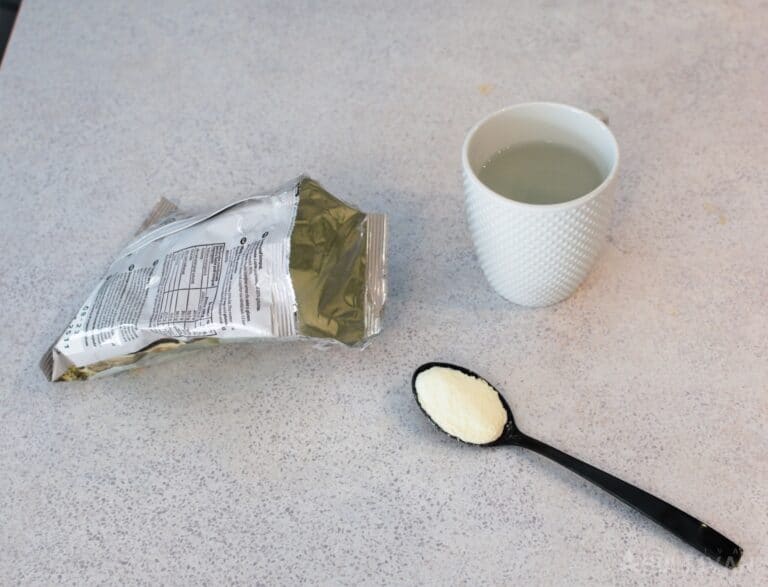
Dairy products on the shelf at room temperature are quite difficult, ranging from “very hard” to “impossible.” The good news is that we can use powdered milk to take care of most of our requirements with a little ingenuity.
As long as you keep the factory package sealed, this stuff will last for a long time and can be reconstituted into a reasonable facsimile of grocery store-fresh stuff.
Another good milk option that will make the storage a snap. Evaporated milk is commonly used in all kinds of desserts and other recipes, and if you thin it, it can be turned into something that tastes a lot like fresh milk.
In cans or cartons, it’s easy to store and will last for a long time if kept cool.
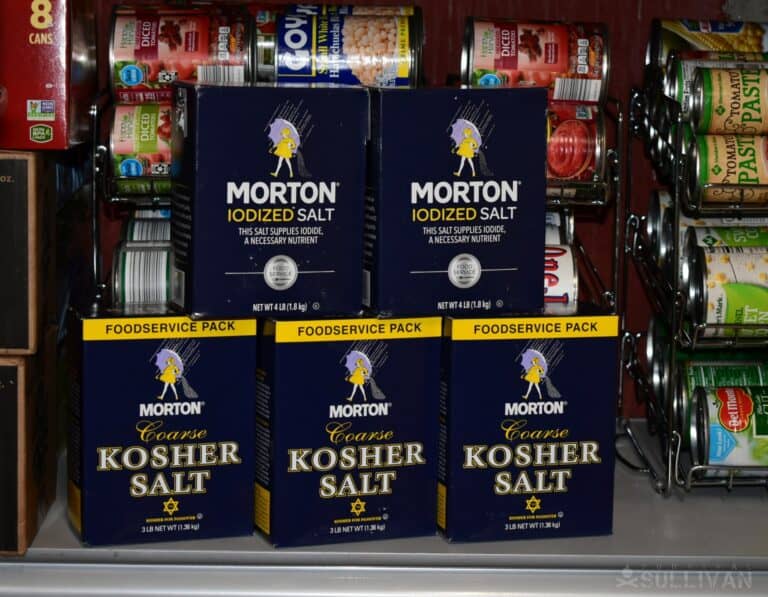
No matter what you are making, salt can always make it better. It’s indispensable in all kinds of recipes and is also an important electrolyte. The good news is that salt lasts literally forever as long as it doesn’t get contaminated.
Sugar is a great source of energy, a ubiquitous ingredient, and highly shelf-stable. It will clump up and harden, but it doesn’t go bad unless pests get into it.
Make sure you put it in a good airtight container; resist the temptation to leave it in that paper bag that it comes in!
Soup mixes, bouillon cubes, and similar products are a convenient way to prepare soup, stew, or broth, but they can also add a ton of flavor to other recipes.
These are very easy to store long-term as long as you can keep them safe from moisture. Humid conditions will necessitate vacuum-sealed packaging for protection.
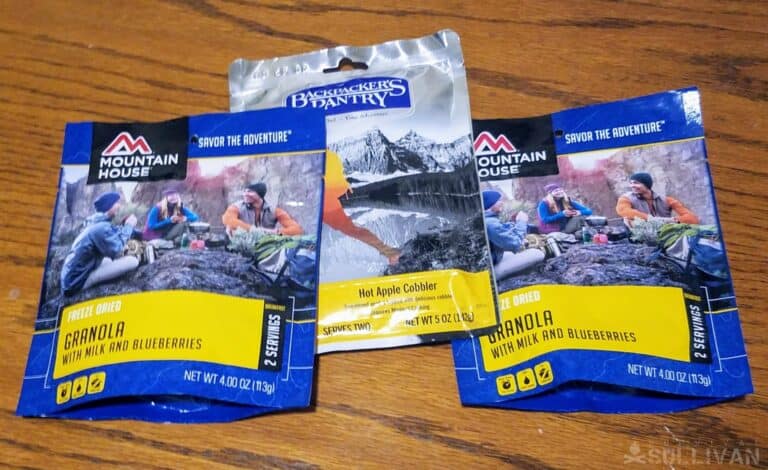
When it comes to room temperature storage, it’s really tough to beat freeze-drying as a preservation process.
Whether you’re talking about meat, vegetables, fruit, cheeses, or anything else, freeze-dried foods that are properly packed can last well over a decade in storage and remain nutritious the entire time.
The only downside for preppers is that these foods tend to be quite expensive when purchased, or the machine to do it yourself at home is very, very expensive!
You might have a hard time thinking of popcorn as a survival food, but it’s got some perks. It’s a fun, tasty source of abundant carbohydrates and a surprising amount of minerals, and it’s just the thing to help take the edge off a bad situation.
If you’re worried about losing power to the microwave, get the stovetop varieties that you can put on a grill or over a fire.
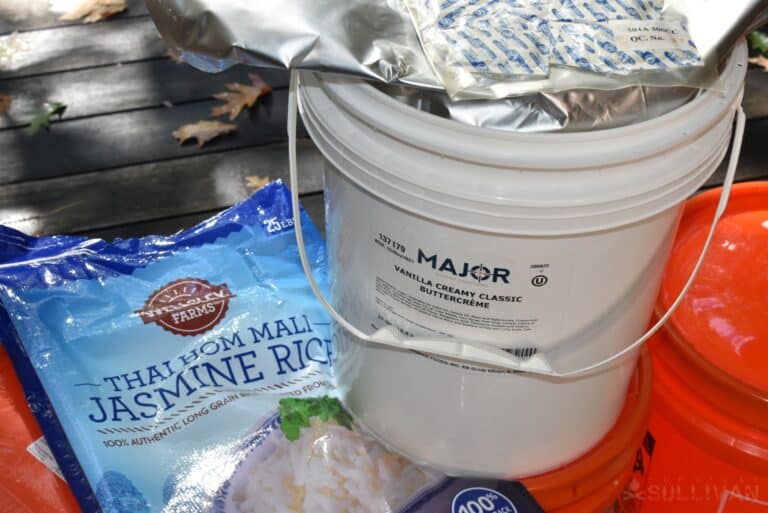
One of the most important staple foods in the entire world, rice is nutritious, easy to prepare, and filling, and also a great source of various minerals.
But when it comes to keeping bulk, dry rice, the type is very important for longevity: Brown rice, since it still has the bran and germ, will only last around 6 months before going rancid.
White rice can easily last 10 years if stored properly, and there are accounts of white rice remaining just fine and safe to eat upwards of 25 years!
All kinds of grains belong in your survival food stash, from wheat and oats to barley and quinoa.
Kept in a sealed container like a vacuum food storage bag or a food-grade bucket with gamma lid, you can expect to get at least a few years out of them, but most wheat varieties and oats can last 10 years or even longer.
A major concern with storing grains is keeping pests away, because they will attract all manner of rodents and bugs!
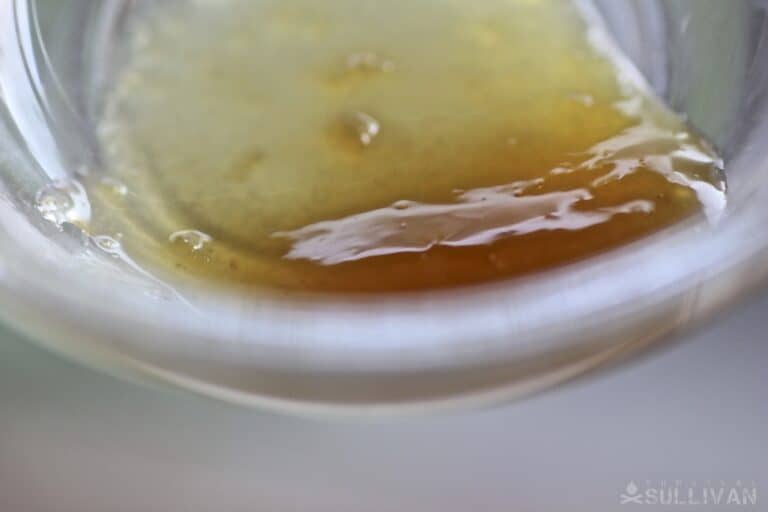
Honey is a legitimately ancient survival food, and all the more incredible because it’s entirely natural. The trick with storing honey is that it can crystallize over time, especially with exposure to humidity or temperature changes.
If that happens, though, you just need to set the container in a bowl of warm water and it will turn liquid again and remain entirely safe to eat.
Corn syrup is sweet, very sweet, and another great source of bulk calories. Yes, it is a boogeyman of sorts in a health context, but something that is this shelf-stable and long-lasting has special value for our purposes.
Make sure you keep it out of direct light and keep it cool if at all possible. Remember, if the seal has been broken on the container, it will not last anywhere near as long!
Maple syrup is sweet, extremely energy-dense, and a great way to add some tasty flavor to simple foods like cooked grains, bread, and even beverages.
The trick is it will only get maximum shelf life if kept cool, around 65° F. If your storage location is warmer, it will still last for years on end in a sealed container, but not quite as long.
For some of us, the real survival scenario would be going without our morning cup of coffee! Jokes aside, coffee can lend normality to a bad situation and also help give you more energy and alertness that you will desperately need.
Instant coffee isn’t as tasty as freshly ground stuff, but it lasts a whole lot longer and is easy to make, meaning it is a fixture in a survival food stash.
If you just hate the taste of coffee or you prefer a milder caffeine delivery vehicle, tea might be a better choice. Tea, whether it is loose leaf or packed in individual sachets, can last a surprisingly long time before it starts to go stale and lose flavor, around 2 years.
Tea also has special benefits for preppers because it is much easier to make and tastes better when steeped cold compared to coffee.
You aren’t going to live on cocoa powder alone, but it’s a great way to add calories and great taste to various sweet treats, or make some ripping good hot chocolate.
Sometimes a little treat can help keep your head in the game during a survival situation. If the factory container is still sealed, your cocoa will be fresh and perfect for 20 years or longer.


Tom Marlowe practically grew up with a gun in his hand, and has held all kinds of jobs in the gun industry: range safety, sales, instruction and consulting, Tom has the experience to help civilian shooters figure out what will work best for them.
